210 posts
Latest Posts by theperpetualscholar - Page 5
(sees a child) they have teeth under their teeth they have teeth under their teeth they have teeth under their teeth up in their gums theres hidden teeth up there and under their teeth


Planche casse-pied. Feutre (contour) et marqueurs à alcool (colorisation).
pls disragard these questions if you arent feeling like explaining anthropology that is probably not within your specific field, but i have questions and somehow youre the most accessible source for answers about ancient-ass humans. so: why are humans so much hardier than other animals? like if you break a horse's bone that horse is kaput, but people bounce back from shit like missing limbs. how are we so cool? also, how prevalent (and when) was pursuit predation? also, thanks! have a nice day
OH no worries, this is something I teach every year and it’s REALLY COOL. There’s footnotes and works cited below the jump if you want them, and I can point you at some other work if this is something you’re interested in reading about. Humans are ridiculously resilient. The reason for this has a lot to do with the tradeoffs we made for endurance rather than speed. Human walking is really energy efficient (it’s really just controlled falling) compared to a horse’s galloping, and we have pretty well-muscled legs. Our plantigrade feet mean that there’s not as much energy when we spring off compared to an animal that runs on their toes, but at the same time, we spend a lot less energy moving around.
Our muscles and leg anatomy have a lot to do with it, too. Let’s look at a horse’s leg compared to a human’s.

Horses in particular have a hard time with broken legs because they have a LOT of mass resting on on those legs. Horses’ legs are basically built to go fast- their leg bones are actually quite light, and below the ankle there’s… well, basically nothing. Just tendon and skin- there’s no big muscles to stabilize or cushion the bone. This means that there’s less weight to drag around so the horse can escape a predator more quickly, but it comes with a major tradeoff- if a horse breaks their lower leg, it tends to shatter. In the wild, this is going to make the horse extremely easy to pick off. But like I said up there, humans- unlike horses- don’t run on our toes. Our ankle bones are chunky and strong, and our lower legs are cushioned with muscle and fat. But our healing ability goes beyond just basic anatomy! Our group dynamics also play into this, too. If a horse breaks a leg, what can the other horses do about it? The injured horse still has its biological needs to fulfill; it has to eat, drink, and evade predators. It has to keep moving- it can’t lie down for a few weeks and let the leg heal. But that’s not true of humans and our closest relatives! I’ll use Neanderthals for this example because I like them a lot, but the same goes for early modern humans, too.
Let’s say that some Neanderthals are out on the hunt, and Thog gets knocked against a tree trunk by a mammoth and she breaks her leg. Because Thog’s a member of a social species, it’s not the end of the world for her or her group. The rest of her crew can keep hunting and Thog can limp back home, where her grandfather looks after her and her younger sister brings her water. She’s able to rest and keep weight off the broken leg, which means that so long as she keeps whatever wounds there might be relatively clean, sepsis is less likely. Group living means that you don’t have to be self-sufficient; no hominin is an island. Part of why we’re so successful is that our ability to care for each other ensures better group survival. If your reproductive-age individuals are also providers, group care means that you’re less likely to lose them.
We know from looking at Neanderthal skeletons that they were injured frequently and were able to shake it off and survive; even elderly individuals with severe arthritis are often found in group contexts, suggesting they weren’t left behind. And we are talking serious injuries here- not just broken legs, but head and neck trauma, too. There’s a famous paper* that says that most Neanderthal injuries came from close contact hunting (due to them being mostly head and neck injuries rather than lower body injuries), but more up-to-date research notes that actually, Neanderthals could- and did- get hurt pretty much everywhere**.
As to when pursuit predation came into effect, the best guess we have is “probably sometime around two million years ago, practiced by Homo erectus/ergaster.” One way we can tell this is by diet. Mandibles are very quick to adapt to dietary pressures, so by comparing mandibles to things with known diets, we’re able to tell what’s going on. Add that to dental wear and morphology studies and chemical analysis of subfossils’*** teeth and we can get a pretty good picture of who’s eating what. What we see with the H. erectus/ergaster complex of species is that they’re eating a wide variety of very tough foods; their jaws and molars suggest that they were eating root vegetables, tough meat, tubers, bone marrow, honey- really, anything they could find. We also know that they were eating a fairly high calorie diet compared to their predecessors; this was necessary for brain development- and we know that these calories came from meat. As average brain mass increases, so does evidence of meat-eating. Brain development is expensive- you have to put a lot of nutrients into it- nutrients that are really hard to get from plants alone. One way to feed the family is by hunting- though realistically this didn’t happen all that regularly. Rather, it’s more likely that hunting supplemented gathering, as it does with many forager groups today; hunting takes a lot of energy and can be dangerous.Archaeology also points to the “around two million years ago” date based on stone tool deposits and fossil prey species. One good example of this is Kanjera in Kenya; it’s a site by Lake Victoria that has good evidence for persistence hunting. There’s quite a lot of gazelle and antelope skeletons that aside from stone tool marks, don’t have a lot of damage. It looks like these were brought to the site for butchering- and they would have had to be hunted because hyenas, lions, and other predators and scavengers will actually eat those bones. Gazelles are a lot faster than humans, and the hominins of the time didn’t really do projectiles; rather, it’s more likely they ran the gazelles down until they were exhausted, then dragged them back to this lakeside camp site to process and eat. It’s likely that this strategy helped fuel the migration of Homo into Asia; once you’re able to hunt big game, your movement is less restricted by the availability of small animals, scavenged meat, and seasonal plants; you can follow herd animals and just chase one whenever you need to eat. However, the exact role that hunting and scavenging played in the development of the Homo genus is something that archaeologists and physical anthropologists do not agree on- when you’re trying to figure out what a species eats and how they got their food, you gotta realize that this can vary heavily by what’s available, what predators are in the area, your own group’s composition, and myriad other factors that can affect food acquisition.
One thing we do know for sure: Persistence hunting works. Our species is super good at it, even today. If you’d like to see some persistence hunting in action, it’s actually still used by San groups in Africa.
Keep reading

Speaking at the British Science Festival, which is taking place in Swansea, she said: “There is no such thing as a male or female brain.
“There is no one aspect of the brain even which if a scientist looked at it they could tell whether it came from a man or a woman.
“We shouldn’t be talking about sex differences in the brain. The brain is a mosaic and every brain is different for every individual.
“Using our neuroscience resources to measure differences is actually a waste of time. It’s more interesting to see what makes individual brains different.”
Prof Rippon believes that studies claiming differences between males and females are due to cultural and environmental factors.
She said that women become “wired” for multi-tasking not because of anything innate, but because that is what society expects of them.
And Prof Rippon said that the segregation between girls and boys even occurs from a young age – with them being given different toys to play with and different books to read – and that could change the way in which their brains develop.
She told an audience at Swansea University that boys’ toys can often be more training-based while girls’ toys are more nurturing.
“I’d say to the scientific community, can we please stop talking about sex? Stop dividing your data into two categories, you are losing so much information,” Prof Rippon said.
“Not only are we feeding the ‘neuro-trash’ industry misunderstanding about what we do, but we are also feeding the inner wimp of people out there who believe that they can or can’t do something based on whether they are male or female.”
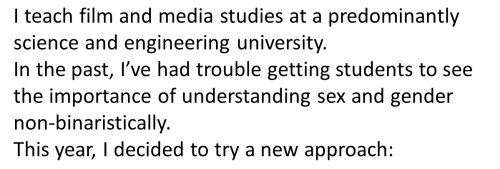
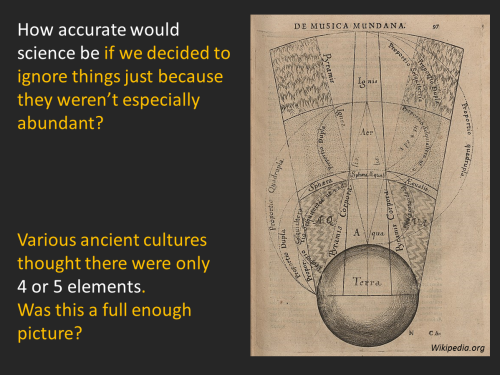
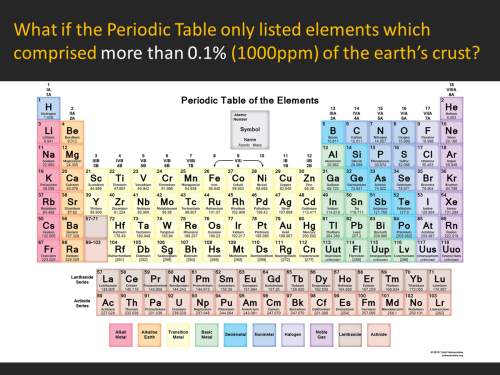
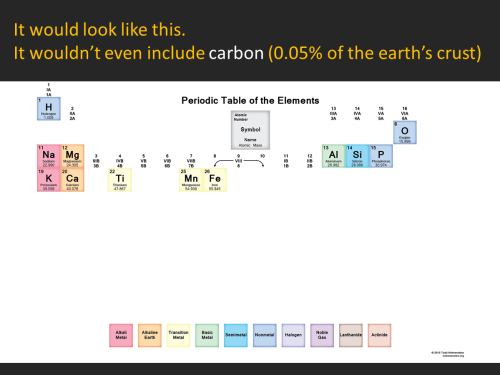
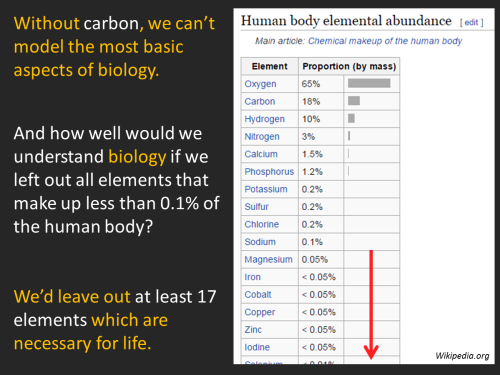
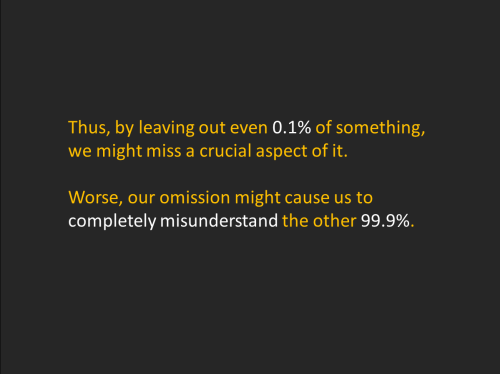
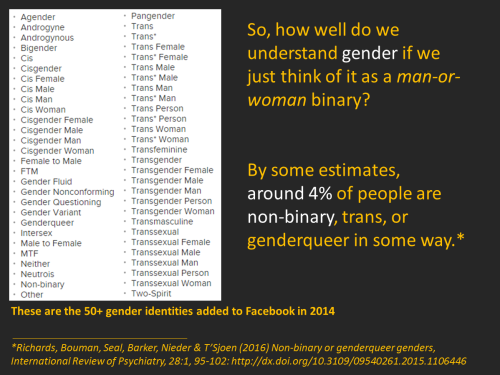


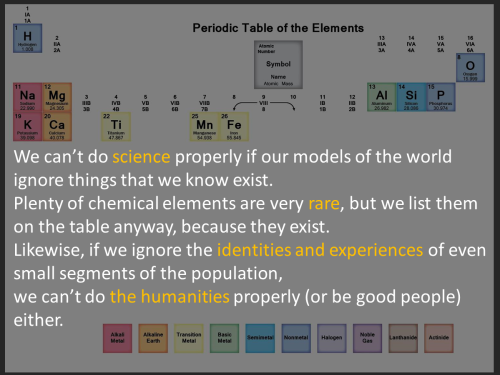
Saying that man and woman are the only genders is actually LESS nuanced than saying that earth, water, air, and fire are the only elements.
reasons why i claim to learn latin:
it’s a beautiful language
its historical importance
the literature is brilliant and best enjoyed in its original language
reasons why i actually learn latin:
so when people ask me to say something in latin i can tell them a meme and claim it means something beautiful
so if i ever get a chance to go back in time, i can talk about dumb shit with people like cicero and mark antony
so i can communicate with my brethren, the demons from hell



occuption: full-time helen of sparta apologist
man it’s so wild to me that the greeks literally thought that a large number of women’s ailments were caused by their wombs (which they believed to be a weird animalistic thing living in women’s bodies) just picking up and migrating all over the place (fun fact, the word hysteria comes from this nonsense), and while that’s horribly misogynistic and terrible i can’t say i wouldn’t milk that shit for all it’s worth if i lived in ancient greece
like, gotta go harvest the crops? sorry dude, womb’s all up in my arms, can’t do anything about it
want me to weave something? love to but the ol womb’s at it again, you know how it is
got caught making out with the neighbor’s wife? haha man that womb of mine sure is a riot
Can you clear up the animal/human egyptian stuff some more? I find it interesting!
I’m honestly not sure any explanation will ‘clear it up’ but I’ll give it a go, since the original post has so many reblogged comments that misunderstand things.
I kinda went into it a bit here in this post, and a little in this one, but I’ll reiterate it here for posterity.
Egyptian gods appear to have animal heads, but, in truth, the animal headed form is merely to demonstrate the duality of the god - the animal and the human. (I want to point out at this juncture that not every Egyptian god has an animal form. Some are simply human, and others have forms that are anthropomorphised inanimate objects). Duality was important to the Egyptians as they were intrinsically linked to the world around them and often their religious mythology is deeply linked to the natural world. This is why we see themes such as life/death structure/chaos male/female animal/human etc. They equated what they saw in their lives as aspects of the divine.
One such example is the god Khepri. Khepri is the god of the Morning/Rising sun, and was responsible for pushing the sun across the sky. Khepri is depicted as, in most cases, as simply a Scarab beetle, and sometimes with the body of a man whose entire head is a scarab beetle. The Egyptians took inspiration from the natural world to explain the divine, so they saw the humble dung beetle (that’s what a Scarab beetle is) pushing it’s ball of dung about, and also its babies hatching out from this dung ball seemingly out of nowhere. The ball of dung they equated with the Sun moving across the sky, thus assuming that a divine scarab was pushing the sun in a similar manner. Khepri took on a ‘creator’ aspect as the Egyptians saw the dung beetle seemingly creating life from nothing, though in reality they’re just laying eggs within the dung ball that eventually hatch. But this wasn’t something the Egyptians understood, so they believed that the scarab beetle had the power to create life from nothing, much like their own creation myth of life springing forth from a mound of earth in the waters of chaos. Dung ball = mound that emerged from the waters of chaos. Thus, when naming the god, the Egyptians chose a word xpr (kheper) which means ‘to come into being’ to relate to the creation of life and also the rising of the sun. And how is xpr written? With a Scarab beetle! Everything has it’s place in Ancient Egypt. As for the human body with a scarab beetle head form, well that’s more of a form that in art allows the Egyptians to show the Scarab beetle doing humanoid things in religious scenes.
For gods like Anubis, who are depicted with the head of their animal form, it’s different. The duality works the same, insomuch as the form you see (Golden Wolf headed human) is just a combination to show that the god has two forms and two kinds of power - the divine human form and the divine animal form. In most cases you would never see the human form as you were only allowed to see a God’s true form after death, so it was prohibited to depict the god as human (though there’s a rare depiction of Anubis in human form at Seti’s temple at Abydos). Basically, the Egyptians believed that images could magically come to life so depicting a god as a mortal human would cause the god to die. No one wants that.* So, the Egyptians combined the Animal and Human in order to show the god legitimately in a scene.
* I am aware that there are gods that only have a human form, but they’ve always got divine markers such as headdresses that mark them as ‘not mortal human’ but a god, therefore they wouldn’t be subject to them to the same rules. Isis and Nepthys for instance have their names in hieroglyphs as headdresses to mark them as different, and Hathor has her cow horns and sun disk.
However, when I say ‘animal form’ I do not mean, and neither did the Egyptians, a walking talking animal that does everything a human does. Anubis’ animal form is not a walking, talking Golden Wolf in human clothing. When I say ‘animal form’ I mean a literal animal. Just a wolf. Nothing else. Every wolf an Egyptian saw they would believe was a form of Anubis visiting the mortal realm.
Unlike in Greek Mythology, where the gods were essentially human (though looking at Zeus…goddamn Zeus) and everyone knew they lived on Mount Olympus, Egyptian gods had no such thing. The Ancient Egyptians believed that their gods lived on the same plane of existence, but on another level. Kinda like ghosts I guess? There but not really. So they would manifest as something. Khepri was the scarab beetle pushing the dung in a ball and in turn rose the sun. Dogs/Wolves hung about in the necropolis so they saw that as a manifestation of Anubis guarding the dead (even though those dogs were most likely eating the dead…), which also gives way to the epithet of Anubis on his Mound (i.e. Anubis who sits upon a mastaba guarding the tomb). Bastet was the cat hunting mice around the grain stores so that the harvest wouldn’t be ruined. The Egyptians would feed these animals as a form of worship,** and that’s how they ended up with so many cats in the house.
** I say worship in a very loose sense. The worship of gods like Osiris, Isis, Amun, Mut, Khonsu etc was the prerogative of the Pharaoh and his phyles of priests (set of Priests for each god). Most Egyptians were not allowed into the major temples. In fact, they were not allowed past the first forecourt, and that was at festival time. The Egyptians believed that their Pharaoh was a demi-god and therefore their link between the gods and themselves. Only he was allowed to worship the gods, as it was Pharaoh’s job to maintain what’s known as Ma’at (cosmic order). If Pharaoh didn’t then the world would fall into chaos, which is why they tried to exorcise Akhentaten from the record because he did not maintain ma’at! Of course, Pharaoh couldn’t be in the temples for each god every day, so most of it was devolved to High Priests and their underlings. Regular Egyptians would not have worshipped the main pantheon, but rather the more minor domestic gods, such as Bes and Taweret, at home. Feeding cats would have fed into this more ‘loose’ worship.
But of course there was also the ‘human’ form, which meant that a god could come to you as a person and you wouldn’t even know it. Sekhmet could manifest as the general who leads the troops into battle, Taweret is the midwife who delivers your baby, Sobek is the fisherman responsible for the good haul of fish today etc etc. The depiction of them in one zoomorphic form is purely to demonstrate that they could be both and that human and animal forms were equal parts of their power and character.
I hope this clears some of it up!
Sources:
Silverman, D. (1991) Divinity and Deities in Ancient Egypt, In J. Baines, L. Lesko, & D. Silverman, Religion in Ancient Egypt: Gods, Myths and Personal Practice. Ithaca and London: Cornell University Press. 7-87
Schoske. S & Wildung. D, (1992) Gott und Götter im Alten Ägypten. Berlin: Von Zabern
Meeks. D & Favard-Meeks. C, (1996) Divine Life of the Egyptian Gods (Hachette (original), 1993 / Cornell University (translation), 1996)
Assmann, J. (2001). The Search for God in Ancient Egypt.(D. Lorton, Trans.) Ithaca & London: Cornell University Press.
Hornung, E. (1982). Conceptions of God in Ancient Egypt: The One and the Many. (J. Baines. Trans) Ithica & London: Cornell University Press
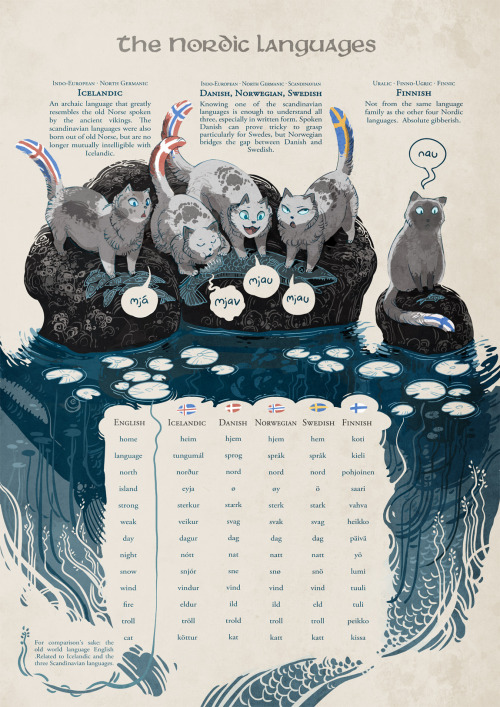
Stand Still, Stay Silent page 195; the differences between the major Scandanavian languages being illustrated by cats! On a related note, I’m totally Swedish cat.



Olga of Kiev burnt down villages using pigeons, buried her enemies alive, and was generally no saint – except she was, because she was literally anointed a saint for her efforts. Her title? “Equal to the apostles.”
She died on this day in 969.
I cover her story in the RP book. :)
honey is the only food product that never spoils. there are pots of honey that are over five thousand years old and still completely edible

Behold: the first written use of fuck, from 1528, inscribed by a monk who seems to have been pretty pissed off with an abbot.
for chinese new year they get all these famous actors and comedians together and they do a lil show and one of the comedians was like “i was in a hotel in america once and there was a mouse in my room so i called reception except i forgot the english word for mouse so instead i said ‘you know tom and jerry? jerry is here’

Researchers are trying to understand why ancient Roman concrete is exceptionally durable.
Over two thousand years ago, the ancient Romans built piers, breakwaters, and other structures out of concrete—and some of those structures still stand today. Now, researchers are trying to understand the chemical and geological processes that work together to give that ancient concrete such durability. Using microscopy, x-ray diffraction, and spectroscopic techniques, they’ve developed a map of the crystalline microstructures within the concrete. According to their research, a slow infusion of seawater into concrete made with a type of volcanic ash found near Rome gradually creates crystals of a material called aluminous tobermorite, which actually strengthens the concrete as it ages.
Marie Jackson, a geology and geophysics research professor and one of the authors of a report on the work, says that understanding Roman concrete could give modern materials scientists ideas for how to strengthen modern structures, and could even lead to new materials, such as concretes that soak up and trap nuclear waste.
Photo by THINK Global School/flickr/CC BY-NC-ND 2.0
Fun fact: Egyptian gods do not have ‘animal heads’. The depictions of gods are meant to contain a duality, as is important in Egyptian Religion (life/death, red land/black land, chaos/order, human/animal). So when you see, say, Anubis with a man’s body and a Jackal head it represents both his human form and his Jackal form, meaning he might appear in either form. But never as a human with a Jackal head. That is only something you’d see on temple walls for the duality aspect.





The Field Museum’s Economic Botany collection contains everything from a seed bank (literally vials upon vials of organized seeds), to hats made out of various grasses and straw material, musical instruments and shoes made from certain trees and barks, stalks of wheat, cobs of corn, bags of tea, dyes, medicines. Some of the items are decades old, and a large portion date back to the 1893 World’s Fair, when the trade and sale of such products was essential to industry growth.
This is a collection about the relationship between people and plants, documenting our use and interactions with items we’ve grown and harvested. It’s botanical as much as it is anthropological: the variety of uses for plants that people have discovered and created over thousands of years is staggering and astounding. As we continue to move towards automated agriculture and become less removed from the direct sources for our food and raw materials, I am grateful and intrigued that we may look into a jar of cherry syrup from the 1890′s and gain a bit more knowledge about the way we used to live.
Pictures:
A jar of cherry syrup from Guyana, 1893
A variety of pasta products, presented by the National Macaroni Association, 1920′s
Tortillas from Mexico, 1901
Sugars from Egypt, 1904
Maize from Brazil, 1948-1949
See more about the Economic Botanical Collection on The Brain Scoop!




This Facial Reconstruction of Henri IV King of France by French artist Philippe Froesch is Mindblowing!
This was all done digitally through a combination of programs like Cinema4d and Zbrush. Traditional methods are still used in his digital reconstructions as you can see in the bottom left picture. The dots poking out from the skull are facial tissue depth markers. They tell the reconstruction artist how thick the tissues should be at certain points on the skull based on large collections of data.

28.05.17 // new week, new window 💭

13.05.17 // Updated my physics window for the first time in ages! Had some thoughts over the past few weeks surrounding a free scalar field universe model so I drew them up as well as some old game theory because I watched a Beautiful Mind and felt nostalgic. I hope you are all having wonderful days / evening / whatever plane of existentialism you currently observe 😉






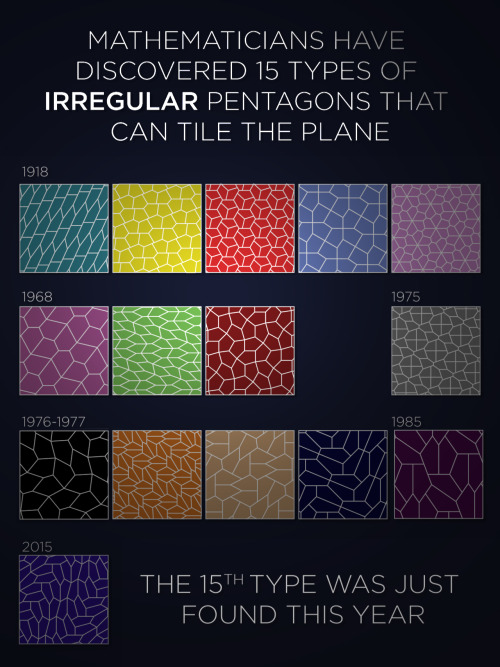

Big math news! It’s been thirty years since mathematicians last found a convex pentagon that could “tile the plane.” The latest discovery (by Jennifer McLoud-Mann, Casey Mann, and David Von Derau) was published earlier this month. Full story.




MIT Brings Riri Williams to Life in Spring Admissions Video
From the MIT Admissions blog:
Chris asked to meet with me last fall, in late September. We sat down in an office in MIT Admissions. “For the spring admissions video,” he said, “I basically want to make a two-minute trailer for the new Iron Man with Riri Williams.” This sentence, and the conversation that we had afterward, was what would eventually turn into the video you all saw posted on Tuesday… [+]
WΛW | Twitter : Instagram : Facebook : SoundCloud
#WeAreWakanda

There are SO many types of coders. Do any of these remind you of someone you know? 🤔 Tag em!

Lasers + Keyboards = All the best things!!! CODE ON. ⚡️⚡️⚡️

Blue Technology Aesthetic